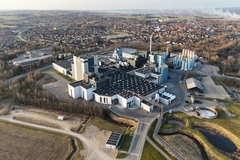
- Industry news
Industry news
- Category news
Category news
- Reports
- Key trends
- Multimedia
- Journal
- Events
- Suppliers
- Home
- Industry news
Industry news
- Category news
Category news
- Reports
- Key trends
- Multimedia
- Events
- Suppliers
GLG Announces Grant of New Patents and Acceptance of New Patent Applications

The two strains contain higher levels of rebaudioside A, the sweetest component of the stevia plant leaf and the primary glycoside used to meet market demand for stevia sweeteners.

1/13/2011 --- GLG Life Tech Corporation, the vertically-integrated leader in the production of high quality stevia, announces that two patent applications that were submitted in 2009 have been granted by the State Intellectual Property Bureau of the People’s Republic of China.
The Company’s stevia leaf processing extraction device has been granted full patent protection and its specially designed waste water treatment technology has also been granted full patent protection by the State Intellectual Property Bureau of the People’s Republic of China. The stevia leaf processing extraction device is innovative technology that reduces, by approximately 30%, both the amount of water used in the soaking step of the extraction process as well as the cycle time required to complete this step. The waste water treatment system is a complex system that removes impurities in the water and cleanses it to a higher purity than when sourced before returning it to the environment. These technologies form a key part of GLG’s ongoing efforts to utilize environmentally sustainable and socially responsible business solutions. The technology team responsible for these patent developments is headed by GLG’s Chief Engineer Kevin Li.
In addition, two patent applications for GLG stevia plant varieties have been accepted by the State Intellectual Property Bureau of the People’s Republic of China. GLG’s stevia agricultural research and development team, led by Chief Agricultural Scientist Qibin Wang, has received acceptance of its patent applications for two significantly competitive stevia plant strains, Huinong 2 (“H2) and Huinong 3 (“H3”), which the GLG team developed through natural propagation. The two strains contain higher levels of rebaudioside A, the sweetest component of the stevia plant leaf and the primary glycoside used to meet market demand for stevia sweeteners.
The GLG H2 and H3 strains contain 66% and 76% rebaudioside A levels in the raw plant leaf, respectively. The naturally bred strains are a significant achievement for the GLG team as the average stevia leaf on the global market contains a significantly lower percentage of rebaudioside A. Higher yields enable not only improved land and resource utilization, but also reduce the cost of production. Further, the two varieties are larger in plant mass, yielding in excess of 22% more leaf per acre. The new H2 strain is currently being filtered into the crop for this year’s harvest.
GLG Chairman and CEO, Dr. Luke Zhang stated, “We are pleased that our two stevia industrial patents have been granted by the patent office and two stevia agricultural patent applications have been recognized and accepted by the patent office. Since 1999 at the beginning of our stevia developments, we formally built two R&D divisions to focus on innovations in both stevia agricultural and industrial processing. Because stevia is a plant, we can generally only perform one step in agricultural R&D per year. There have been seven major steps in the developmental procedure to get the new strains meaning both our H2 and H3 new strains have taken more than seven years to develop. I believe that these new plant varieties will increase our product quality and decrease our product cost beginning with the 2011 harvest season. We are also pleased to be granted a patent on our innovative waste water treatment system and a patent for our stevia leaf processing extraction device.
At GLG, we focus on not only creating great tasting, low cost, natural sweetening solutions for our customers, but also on creating technology that uses fewer natural resources and decreases the impact on the environment within which we operate.”










